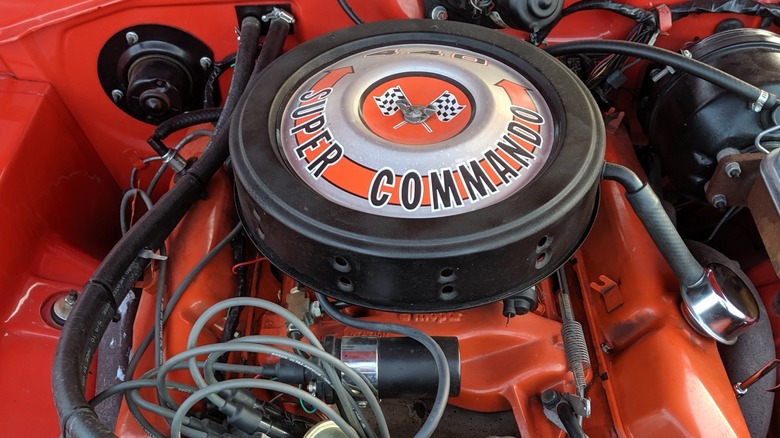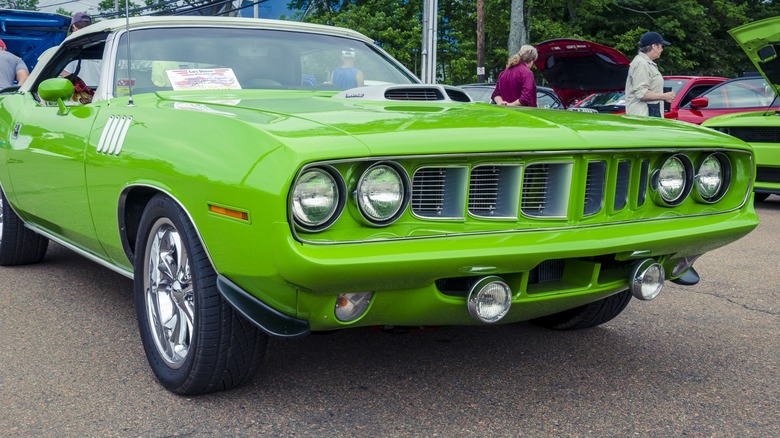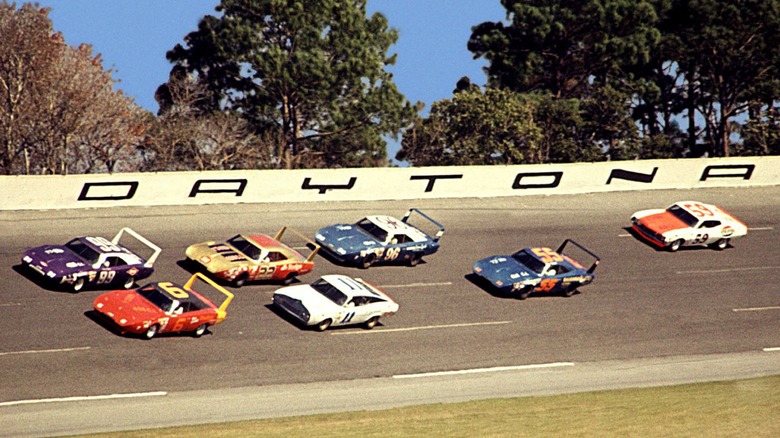
Tammy Karatchuk/Shutterstock
By Ron King/
Like most things related to the muscle car era, the Plymouth 440 Super Commando big-block V8 engine roared to life in the late 1960s and faded away in the early 1970s. Chrysler produced standard cast-iron 440-cubic-inch engines from 1965 to 1978 with a 4.32-inch cylinder bore and 3.75-inch stroke. These engines, equipped with two-barrel carburetors and restrictive exhaust systems, powered various Chrysler vehicles with around 330 brake horsepower (bhp).
From 1967 to 1971, a select few 440 engines received the high-output treatment, boosting power ratings to around 375 bhp. The power increase came from using a four-barrel carburetor, a mild camshaft, and a free-flowing dual exhaust system, all improvements over the standard 440 offering.
Dodge called the 440-cubic-inch high-output, four-barrel carbureted engine the 440 Magnum, while Chrysler called it the 440 TNT. The 440 Super Commando was Plymouth’s name for its version. In addition to its GTX and Fury models, Plymouth offered the 440 Super Commando in the 1970-71 ‘Cuda and the 1970 Road Runner Superbird.
1970-1971 Plymouth ‘Cuda

Kenmo/Getty
Plymouth’s third-generation Barracuda, introduced for the 1970 model year, would continue into 1974. Plymouth initially offered three trim levels for the Barracuda: the base Barracuda, the luxurious Barracuda Gran Coupe, and the high performance ‘Cuda. Midway through the 1970 model year, Plymouth added the Barracuda Coupe trim between the base and Gran Coupe. Of all the trim options, only the ‘Cuda offered the 440 Super Commando engine.
Plymouth carried the sporty ‘Cuda trim option into 1970 from its introduction in 1969. However, the all-new third-gen design featured a wider engine compartment capable of accepting Plymouth’s massive 440 Super Commando powerplant. While the oversized 440 V8 fit in the space, the increased power required modifications to the suspension and frame.
The 440 Super Commando engine option gained 40 horsepower over the ‘Cuda’s base 383 V8. Plymouth removed the 440 Super Commando from the 1971 ‘Cuda engine options, but savvy buyers could still special order it. By 1972, the 440 Super Commando was gone, and other Cuda engines were de-tuned thanks to government mandates and rising automobile insurance rates.
1970 Plymouth Road Runner Superbird

Racingone/Getty Images
Plymouth only produced the iconic Superbird, a modified version of its Roadrunner, for a single model year, 1970. Its sole purpose was to satisfy NASCAR’s homologation rules, which required automakers to mass-produce street-legal versions of factory racecars. By 1971, NASCAR rules had changed, and production ceased with fewer than 2,000 Superbirds on the roads.
However, Plymouth’s ulterior motive for creating the Superbird was to woo Richard Petty back to its NASCAR race team. Petty left Plymouth to join Ford’s race team after struggling through the 1968 NASCAR season. Outmatched in 1968, Petty wanted Plymouth to build a new aerodynamic racecar similar to Dodge’s 1969 Charger Daytona 500. Plymouth refused until it became apparent that Petty wouldn’t return without a better racecar.
With aero-cars like the Charger Daytona and Superbird increasing speeds on the track, NASCAR began engine restrictions to slow them down for safety reasons. Those restrictions reduced the aero-cars’ advantages, making Superbird production less appealing as consumers turned to more sensible automobile options. Unfortunately, the Superbird’s dramatic appearance had an equally abrupt ending.